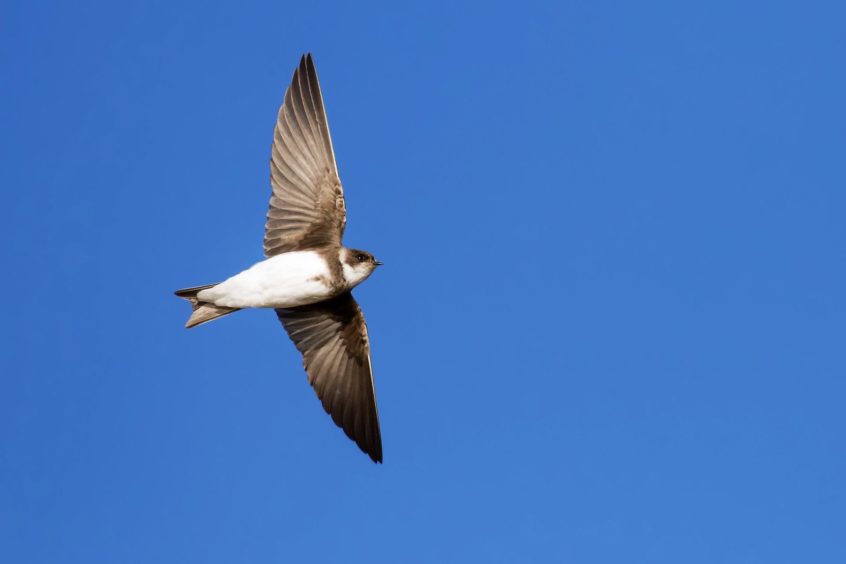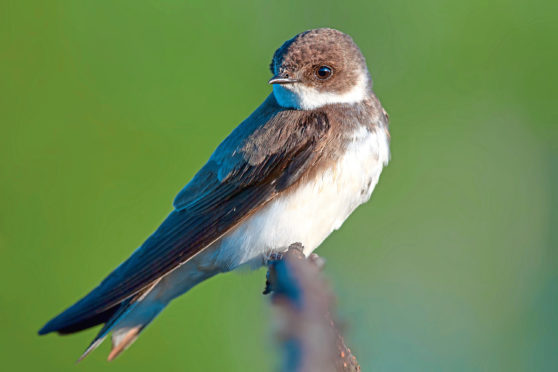Down by the river, the end of March is always a tantalising time, for my soul is consumed with the anticipation of glimpsing my first sand martins of the year, newly arrived from their African wintering grounds.
They are such compelling little birds, one of our earliest migrant arrivals, and often first appearing on brown-skimmed wings over large bodies of water such as Loch of Skene near Aberdeen or Loch Kinord on Deeside before then dispersing to their breeding sites where river sandbanks abound.
Once they get down to breeding, life becomes a dangerous lottery, and at any moment, torrential deluges of rain can raise river levels and flood-out their nesting burrows. They also run the gauntlet of predatory mink, which like nothing better than to dig out their burrows for eggs and chicks.
Even if I see no sand martins during my late March forays by the river, there is so much else to catch my eye, including an abundance of silver-furred pussy willow catkins adorning swaying branches.
Willows are well-adapted for living by riversides and in semi-submerged environments such as loch edges and boggy ground. Identifying different species of willow can be challenging, as they often hybridise with each other. Willows are ecologically crucial, pioneering colonisers, riverbank binders, and a key food tree for larval and adult insects.

This period of spring, starting from mid-March and stretching into early April is one of overlap and transformation, and it is always wonderful to be in among both winter and summer wildlife at the same time. Some days are cold, but others are tantalisingly warm as the sun gains increasing vigour with each passing day.
On flooded field margins, winter-visiting greylag geese slumber and gently honk to each other, while restless flocks of fieldfares cackle as they bound through the still bare branches of riverside alders. Such lingering signs of winter are still strong, yet they are yielding and soon the greylag and fieldfares will depart to their northern breeding grounds. Spring now has the upper hand, and the air is already beginning to ring with the simple calls of chiffchaffs, another early spring arrival.
Some people find the two-tone ‘chiff-chaff’ call to be rather monotonous. It is not an opinion I share, for the uncomplicated song has a reassuring quality, and when other warblers have fallen silent in August, the little chiffchaff will continue to sing, albeit not as enthusiastically as before.
There are other signs of spring by the riverside. Queen buff-tailed bumblebees buzz and hover over the ground, looking for holes and crevices to settle down and form new colonies. The previous autumn all the workers, drones and the old queens died off as the cold weather took grip, leaving behind just the young, fertilised queens, who hibernate, before emerging in spring to start the cycle of life once more.
Info
During the last 50 years, the European sand martin population has crashed on two occasions as a result of drought in the birds’ African wintering grounds.









